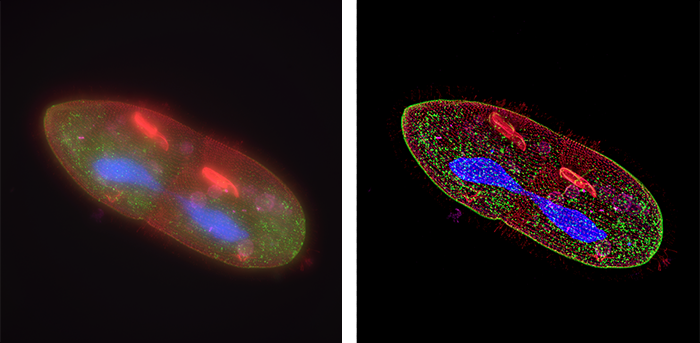
Brain research will step to the next level when a powerful supercomputer is built at UQ’s Queensland Brain Institute.
The supercomputer is the first of its kind outside of the United States and the first in the Asia-Pacific to feature a kind of hardware designed specifically to accelerate extremely high-resolution image processing, deep learning and artificial intelligence research.
The supercomputer is currently being assembled at QBI and should be fully operational by the February 2018. It will be used to support research at QBI, as well as UQ's Institute for Molecular Biosciences (IMB), Center for Microscopy and Microanalysis (CMM) and Research Computing Centre.
Initial research using the new computer will focus on the whole brain connectome – a project to categorise and isolate brain wiring that may be the cause of many human brain developmental disorders, many of which are yet to be classified.
"We will be able to use this supercomputer to analyse brain MRI data to obtain detailed maps of brain connectivity," said QBI’s Deputy Director (Research) Professor Linda Richards, who is leading the brain connectome project. "Understanding how brain connections vary between people and in people with brain disorders will underpin new discoveries in brain structure and function and new diagnostic tools."
Supercomputer will speed up scientific discoveries
Data-intensive research such as MRI and microscopy imaging is capable of generating several terabytes of data in just a few minutes, so researchers need high-powered computers to process the data.
The new supercomputer will not only help cut down the time to process such huge amounts of data that AI and modern scientific imaging requires, but will also have additional functions to process data in new ways.
A current challenge in molecular biology is capturing images of moving microbes and cells under the microscope because – just as with a typical camera, movement causes blur. The 'noise' in these images needs to be removed using computer algorithms and this is extremely intensive and expensive work that many computers are not able to manage.
The new supercomputer will be able to process the images much quicker than any currently available technology, saving valuable research and discovery time.
The supercomputer is called Wiener - a nod to mathematician Norbert Wiener, who devised an algorithm to remove noise in images.
Computational neuroscientist Professor Geoff Goodhill, from QBI and the School of Mathematics and Physics, uses deep learning techniques to help understand how information is coded in biological neural networks. His recent research in spontaneous brain activity in zebrafish showed that their environment impacted how the fishes’ brains wired up during development.
"Wiener will dramatically increase the speed at which we can derive new insights from experimental data, and also test new hypotheses about nervous system function," he said.
Supercomputer to aid big discoveries
The supercomputer is being built by QBI research computing specialists using cutting-edge Dell servers and graphics processing units from nVidia. The supercomputer will connect to UQ’s award winning MeDiCI infrastructure, for fast data transport.
"The balanced and innovative architecture that the team have put together in partnership with Dell EMC represents the logical extension of our scientific instruments and research infrastructure," said QBI’s Senior IT Manager (Research), Jake Carroll.
"If we want the biggest scientific outcomes and things that can change the quality of people’s lives, we must be prepared to push the boundaries, maximising the utility and efficiency of our world-class scientific instruments".
A supercomputer is a device that allows many parallel calculations and has processing potential many hundreds of thousands of times faster than a normal computer.



